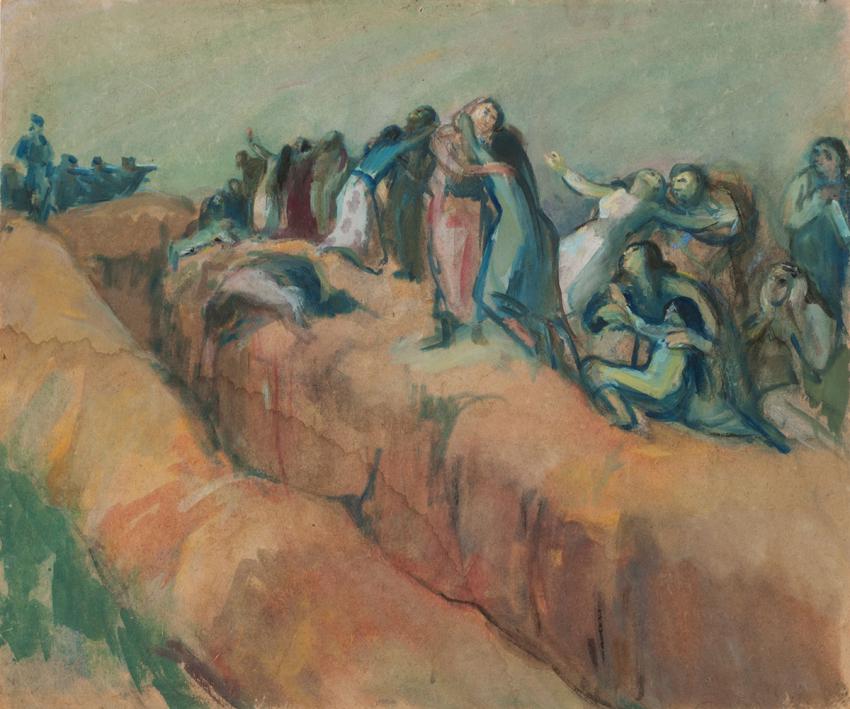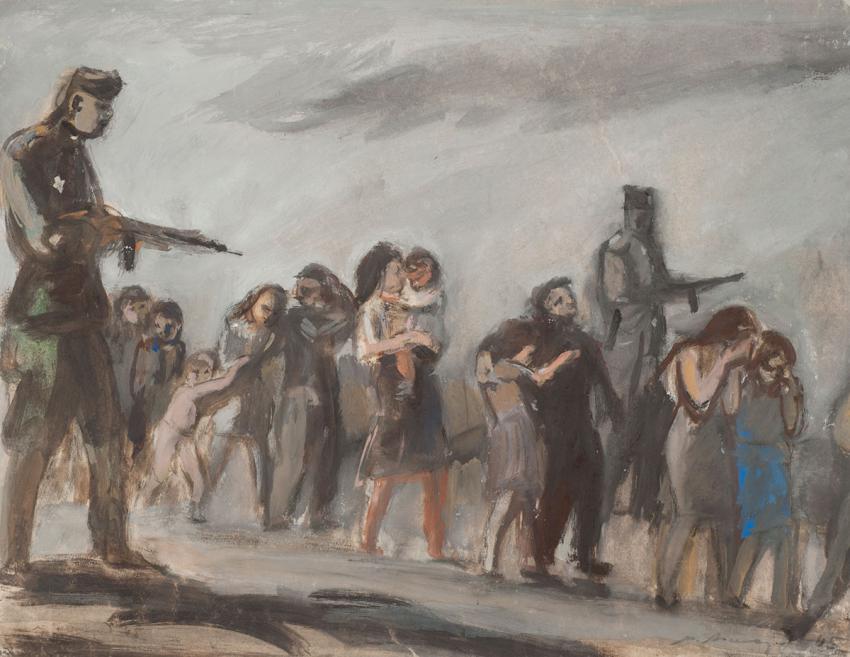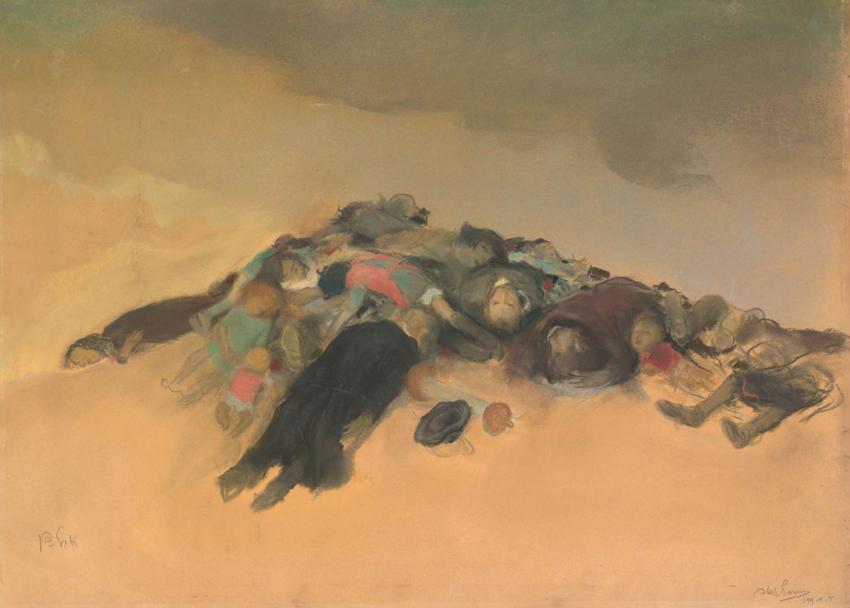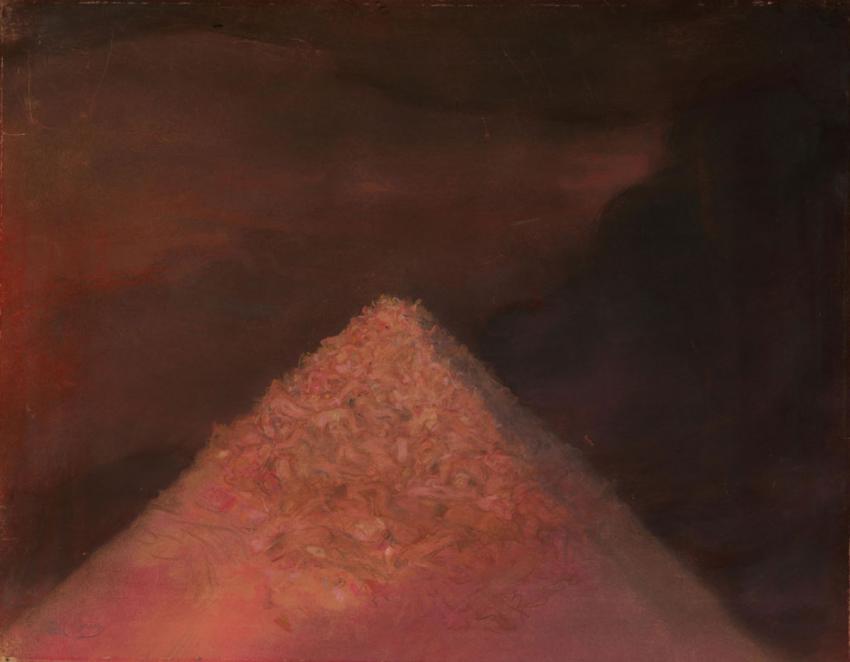Me'er Akselrod (1902-1970) was born in a small town in White Russia. During WWI, his family settled in Minsk and there he received his art education from private teachers, as well as from the teacher of Marc Chagall, Yehuda Pen, in Vitebsk. During the period of his training in Moscow, Akselrod returned to the small villages of his native area to draw the inhabitants and document their lives.
In May 1941, his brother, the poet Zelik Akselrod, was arrested as an “Enemy of the People” and was shot by the Soviets during the retreat of the Red Army in the wake of Hitler’s advance. Akselrod and his immediate family spent the difficult war years in Alma-Ata in Kazakstan, before returning to Moscow in 1944. He remained in the Soviet Union after the war, traveling extensively and painting scenes from various areas of the country.
In 1964-1969 he created the Ghetto Series, now part of Yad Vashem's Art Collection, containing the works Those Led to Death and On the Edge of the Abyss. Both paintings reflect the experiences of his own family during the war and his travels in the small Jewish communities of White Russia. In both paintings, Akselrod avoids photographic reality; figures are created with soft, blurry lines and are not sharply defined. In Those Led to Death, the central focus, indicated by the point of a soldier's gun, is placed upon a mother holding her infant. This image, in addition to the scale in which the soldiers and the victims are depicted, with the soldiers twice the size of the victims, illustrates not only the power imbalance, but also the vulnerability of the victims.
In On the Edge of the Abyss Akselrod draws upon the quality of innocent disbelief expressed by the victims. The artist aligns the subdued blues and whites of the victims with the colors of the heavens, while juxtaposing them with the harsh ruddy-browns of the pit that awaits the victims as a communal grave.The central visual point of the work is the pit, which cuts across the picture in a forceful diagonal line.
Abel Pann (1883-1963), the son of Rabbi Nachum and Batya Fefferman, was born in Dvinsk, Latvia. After studying art in schools and institutions throughout the Soviet Union and Europe, he moved to Israel in 1913 in order to teach at the Bezalel School for the Arts.
At the outbreak of WWI, Pann found himself once again in Europe, where he heard about the pogroms directed towards the Jews of Russia. In light of these events, he drew a series entitled The Jug of Tears, which depicts the terror of the pogroms. Because Pann had already developed an artistic language to deal with the horrors of WWI, he was able to apply his prior experience of depicting human tragedy, when he learned of the horrors of the Holocaust.
The two works depicted here, The Pile of the Slain and The Unwanted, reveal the aftermath of the mass shootings carried out by the Einsatzgruppen, the SS mobile killing units. In The Pile of the Slain, Pann creates a noticeable contrast between the somber, dark colored bodies of the dead and the earthy yellow-browns of the ground beneath them. The indistinct, figurative depiction of the dead, achieved through the blurred softness of the pastel, evokes a heightened sense of the horror and reinforces the state of the dead – forsaken and anonymous.
In The Unwanted, the perfectly ordered pyramid of hues of gray and red is in fact, upon closer examination, a pile of contorted, randomly strewn bodies. Again, the softness of Pann's pastels, which characterizes the majority of his works, serves as a stark contrast to the brutality of the scene. The horror is depicted as seen through tears, as opposed to through the focused lens of a camera. Both drawings entered Yad Vashem’s Art Collection in 1961.
First published in Yad Vashem Jerusalem magazine, #22, April 2001














